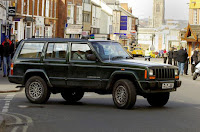
Just finished five months ago, the Martin family home northeast of Edinburg is part of a new generation of energy-efficient and eco-friendly homes. The trend is gaining traction across the nation, not only because of the environmental impacts but because the technologies are becoming cheaper both up front and in the long term.
Even with 5,000 square feet of home, the Martin family pays the same for electricity, about $425 in July, as it did in its 3,000-square-foot McAllen home. And it all happened with a few careful choices during the home’s construction.
Special thick aerated concrete walls and high-tech insulation keeps heat out of the loft-style home while specially oriented windows let in light.
A geothermal piping system helps keep the air conditioning unit working more efficiently and a propane water tank heats faster and cuts down on waste.
“I get 70 percent more house for the same electricity bill,” said Martin, 32.
Green building
The payoff can be big for both homeowners and builders. Homeowners can save anywhere from 20 to 70 percent on electricity costs, while builders can net a $2,000 tax credit for building a green-certified home.
“I don’t consider myself an environmentalist. I drive an SUV,” Bill Martin said. “But I can save money by building this house the way I did, and I can help the environment while I’m at it.”
With “green building,” some homeowners go as far as using recycled materials, air-quality-conducive carpeting and paint. Others, like the Martins, simply use low-power lighting and heating.
Building a green home can add anywhere between 5 and 30 percent to a home’s up-front construction cost, said Mike Krismer, owner of Krimser Consulting.
“The whole green concept is very much environmentally friendly in terms of the materials that you use,” Krismer said. “But it’s also energy efficient.”
Homeowners can go green for as little as 5 percent more by adding energy efficient appliances, insulation and lighting; and as high as 30 percent with solar panels, high-efficiency building products and eco-friendly materials.
“I think people are ready here,” said Gayle King, a real estate agent and developer with Falling Water Realty. “Who wants to have a $500 electric bill.”
By 2010
The 9.24-acre Bentsen Lakes subdivision is set up with rules that encourage home purchasers to employ energy efficient design and use eco-friendly materials, such as insulated concrete forms and high-tech plastic foam insulations.
With increases in technology and lower costs for energy-efficient materials, some estimate that all American homes will be built “green” by 2010, said Jeffrey Dandeneau, chief operating officer of Valley-based Crossover Homes.
“There is a lot of product available here already and what we don’t have we can get very easily,” he said. “There is very little that we can’t already do.”
In the Valley, a key to building a green, high-performance home is making sure homes are sealed tight, Dandeneau said.
With high heat and humidity here, homebuilders can install better windows, insulation and wall materials to keep a home cooler and dryer during the day.
For his new home, Martin chose high-performance windows for most of his home — except for the massive windows in his kitchen, which provide much of the area’s evening light.
Martin also used high-tech blown foam insulation instead of standard fiberglass.
That helps seal the home better than normal porous fiberglass. It also doesn’t need to be replaced like other blown insulations.
The airtight home keeps the family cool during the day and comfortable at night.
“Sometimes it gets so cold at night that we have to turn off the air conditioner,” Laura Martin said.
full article



